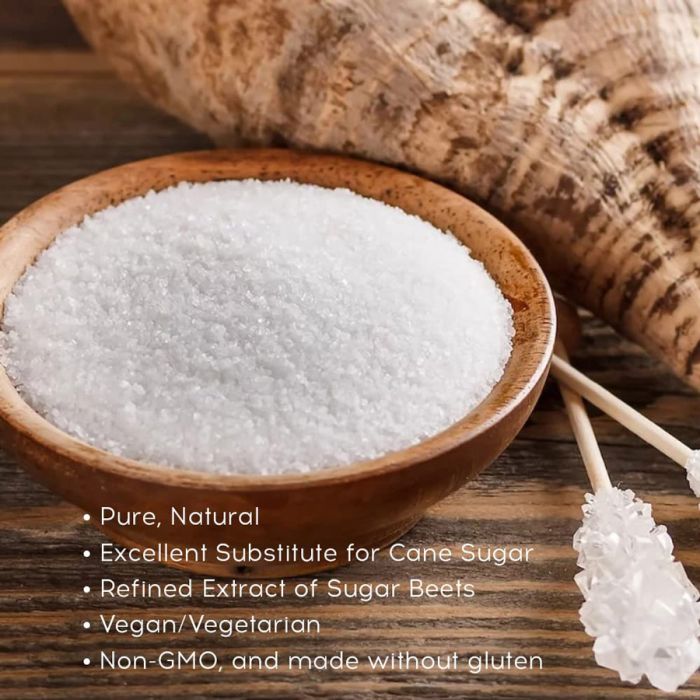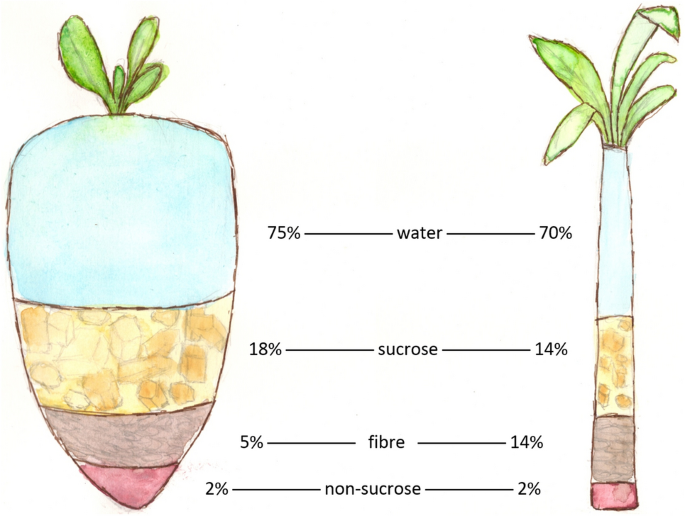Discover the Uses and Advantages of Beet Sugar Vs Cane Sugar in Your Daily Diet Plan
Discovering the unique high qualities of beet and cane sugar exposes more than just their sweetening capacities; it highlights their one-of-a-kind impacts on health and wellness and cooking arts. Beet sugar, understood for its refined flavor, is commonly favored in fragile desserts, whereas cane sugar, with its hint of molasses, includes richness to durable dishes. Each kind holds its very own dietary account and glycemic ramifications, inviting a much deeper understanding of their duties in a balanced diet plan and lasting intake methods.
Origin and Production Processes of Beet and Cane Sugar

The distinct environments and dirt types needed for growing sugar beetroots and sugarcane add to differences in their farming methods and geographical distribution, affecting the economics and sustainability of their manufacturing. beet sugar vs cane sugar.
Nutritional Comparison Between Beet Sugar and Cane Sugar
Despite originating from different plants, beet sugar and cane sugar are nutritionally extremely comparable, both mainly being composed of sucrose. Each supplies concerning 4 calories per gram, translating to roughly 16 calories per teaspoon. Structurally, both sugars are made up of roughly 99.95% sucrose, with very little quantities of other substances like dampness and trace element, which do not considerably modify their nutritional profiles.

Ultimately, when choosing in between beet sugar and cane sugar based upon dietary material alone, both offer similar benefits and disadvantages as they are basically types of the same particle-- sucrose, offering quick power without other nutrients.
Influence On Health And Wellness: Glycemic Index and Caloric Content
Exploring even more into the impacts of beet sugar and cane sugar on health, it is important to consider their glycemic index and calorie web content. Both sugars are classified as sucrose, which is composed of sugar and fructose. This structure leads them to have a similar influence on blood sugar level degrees. The glycemic index (GI) of both beet and cane sugar is around 65, categorizing them as high-GI foods, which can create quick spikes in blood sugar degrees. This is an important aspect for people taking care of diabetes or those trying to support their energy levels throughout the day.
Each kind of sugar consists of about 4 calories per gram, making their calorie content matching. For those monitoring calorie consumption, specifically when handling weight or metabolic wellness problems, recognizing this equivalence is crucial (beet sugar vs cane sugar). However, excessive usage of any type of high-calorie, high-GI food can contribute to wellness problems such as advice obesity, heart illness, and insulin resistance.
Environmental and Economic Factors To Consider of Sugar Production
Beyond wellness influences, the production of beet and cane sugar likewise raises considerable ecological and financial concerns. Sugar beet farming tends to need cooler environments and has a lower geographical impact compared to sugar cane, which flourishes in tropical regions. Nevertheless, both plants are intensive in regards to water use and land occupation, potentially causing logging and water scarcity. Financially, the worldwide sugar market is highly volatile, affected by adjustments in worldwide trade policies and aids. Several nations incentivize sugar manufacturing via financial backing, skewing market value and influencing small-scale farmers negatively.
In addition, making use of chemicals and plant foods in both beet and cane sugar farming can result in soil deterioration and pollution, additional influencing biodiversity and neighborhood water bodies (beet sugar vs cane sugar). The option in between growing sugar beet or cane commonly pivots on regional environmental problems and financial variables, making the sustainability of sugar production an intricate concern
Culinary Applications and Flavor Differences
While the environmental and financial aspects of sugar manufacturing are undoubtedly significant, the dig this choice in between beet and cane sugar also influences culinary applications and taste profiles. Beet sugar, stemmed from the sugar beet plant, is recognized for its incredibly neutral preference. This makes it a versatile component in cooking, where it does go right here not alter the flavor of other components. It dissolves promptly and is suitable for use in cakes, cookies, and pastries.
Walking stick sugar, drawn out from sugarcane, often retains molasses traces, which impart a distinct richness and depth. This small molasses taste enhances the complexity of baked items, sauces, and marinates. It is especially favored in products where a caramel touch is preferred, such as in brownies or gingerbread. The mild variant in dampness web content in between beet and cane sugar can impact the structure and consistency of recipes, making cane sugar a recommended choice for specific dishes that benefit from its one-of-a-kind properties.

Verdict
Finally, both beet and cane sugar have distinct origins and manufacturing procedures, using similar dietary profiles with minor distinctions in sodium content and flavor. While their effect on health, specifically concerning glycemic index and calories, is comparable, the choice in between them frequently comes down to ecological, financial aspects, and particular culinary demands. Comprehending these aspects can assist customers in making notified decisions that align with their health goals and flavor choices.